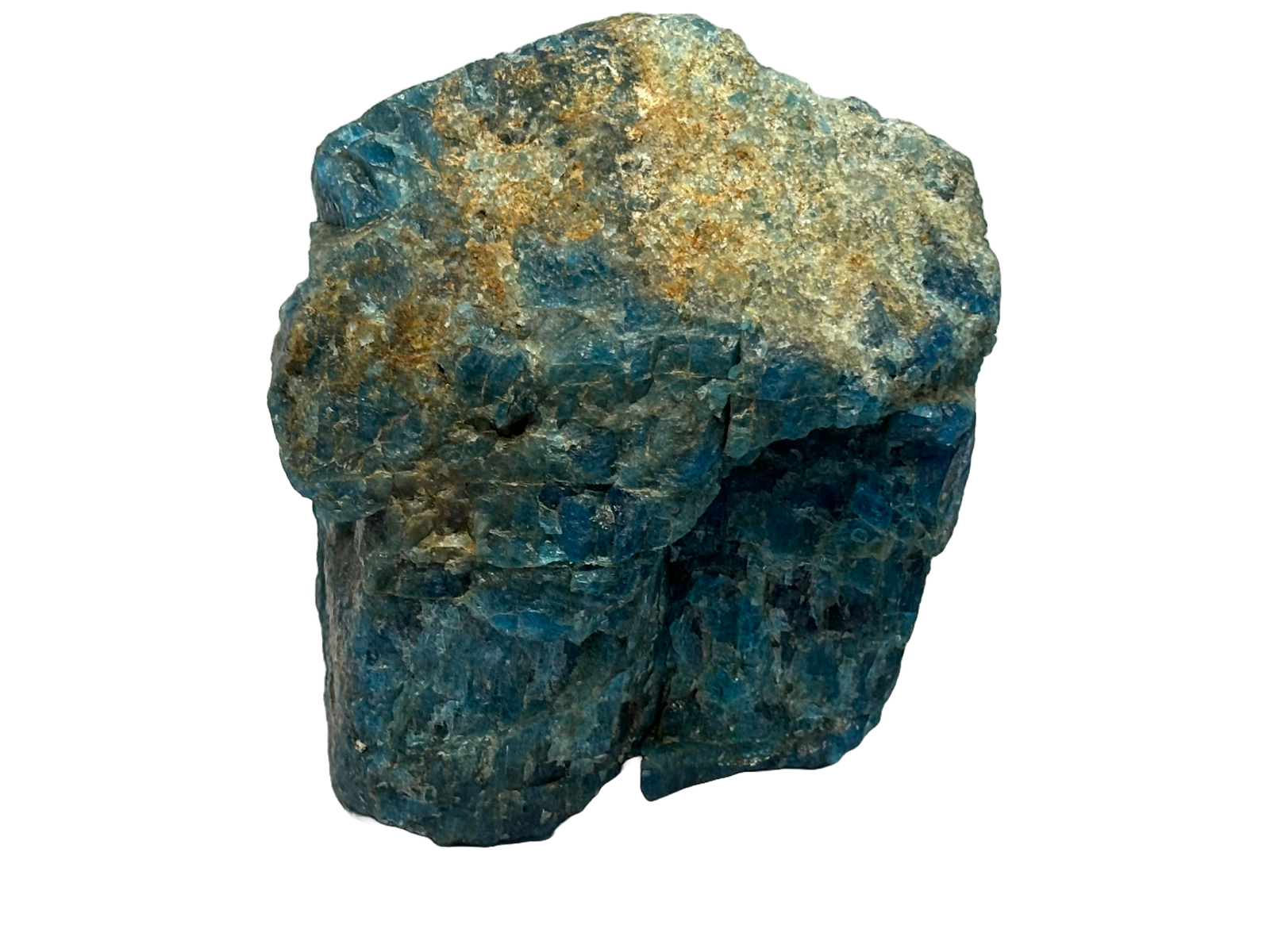
The name “Apatite” comes from the Greek word apate, meaning “deception” or “to deceive,” due to its ability to be easily mistaken for other minerals such as beryl, topaz, and peridot. This mineral’s resemblance to several gemstones has made it a source of confusion throughout history.
Composition and Physical Characteristics
Apatite is a group of phosphate minerals with the general chemical formula Ca5(PO4)3(F,Cl,OH). It is primarily composed of calcium phosphate, the same material that makes up bones and teeth in vertebrates. Apatite has a Mohs hardness of 5, making it relatively soft compared to other gemstones.
Varieties of Apatite
Apatite occurs in a range of colours and compositions, leading to distinct varieties:
- Fluorapatite – Rich in fluorine, the most common variety
- Chlorapatite – Contains chlorine instead of fluorine
- Hydroxyapatite – Contains hydroxyl (OH) groups and is a major component of human bones
- Asparagus Stone – A yellow-green variety named for its resemblance to asparagus
- Moroxite – A blue-green variety
- Manganese-rich Apatite – Displays pink to reddish hues
Locations
Apatite is found worldwide, with notable deposits in:
- Brazil – Produces vivid neon-blue and green specimens
- Madagascar – Known for deep blue and teal-coloured apatite
- Mexico – Source of bright green varieties
- Russia – Produces yellow and green apatite
- Canada – Found in Ontario and Quebec, particularly in igneous rocks
- United States – Maine and North Carolina yield gem-quality specimens
Archaeological and Significant Finds
Although not commonly associated with archaeological sites, apatite is essential in the study of ancient bones and fossils, as fossilised remains contain traces of hydroxyapatite. Apatite-rich rocks have been found in lunar samples brought back from the Moon, suggesting the presence of water in the lunar crust.
Historical and Current Usage
Historically, apatite was not widely used in jewellery due to its softness. However, it has played a significant role in science and industry.
- Fertiliser Production – Apatite is the primary source of phosphorus, a key component of fertilisers.
- Medical Applications – Synthetic hydroxyapatite is used in bone grafting and dental implants.
- Jewellery – While softer than many gemstones, apatite’s vibrant colours make it a sought-after stone for collectors and jewellery makers who use protective settings.
Interesting Facts
- Apatite is one of the few minerals found in both terrestrial and lunar samples.
- Neon-blue apatite from Brazil is highly valued for its resemblance to Paraiba tourmaline.
- Despite its relative obscurity in commercial jewellery, apatite’s bright hues make it an eye-catching addition to collections.
- Hydroxyapatite is used in toothpaste to help remineralise tooth enamel.
Folklore, Legends, and Tales
Apatite has not been widely mentioned in ancient folklore, likely due to its frequent misidentification as other gemstones. However, in modern metaphysical circles, it is considered a “stone of manifestation,” believed to enhance creativity, motivation, and personal growth. Some legends associate blue apatite with the lost city of Atlantis, claiming it holds the wisdom of ancient civilisations.
Astrology and Zodiac Links
Apatite is associated with several zodiac signs, depending on its colour:
- Blue Apatite – Linked to Gemini, enhancing communication and self-expression.
- Green Apatite – Resonates with Libra, promoting balance and harmony.
- Yellow Apatite – Connected to Leo, boosting confidence and personal power.
Chakra System Connections
Apatite’s various colours align with different chakras:
- Blue Apatite – Third Eye and Throat Chakras (enhancing intuition and communication)
- Green Apatite – Heart Chakra (promoting emotional healing and compassion)
- Yellow Apatite – Solar Plexus Chakra (stimulating confidence and personal willpower)
Birthstone and Wedding Anniversary Links
While not a traditional birthstone, Apatite is sometimes considered an alternative birthstone for those born in March due to its resemblance to aquamarine. It is not widely recognised as an official wedding anniversary stone, but its connection to communication and emotional clarity makes it a meaningful gift for couples celebrating milestones.

Apatite
Motivating and insightful, Apatite clears confusion and awakens inner vision. Boosts creativity, confidence, and personal growth with vibrant energy.
